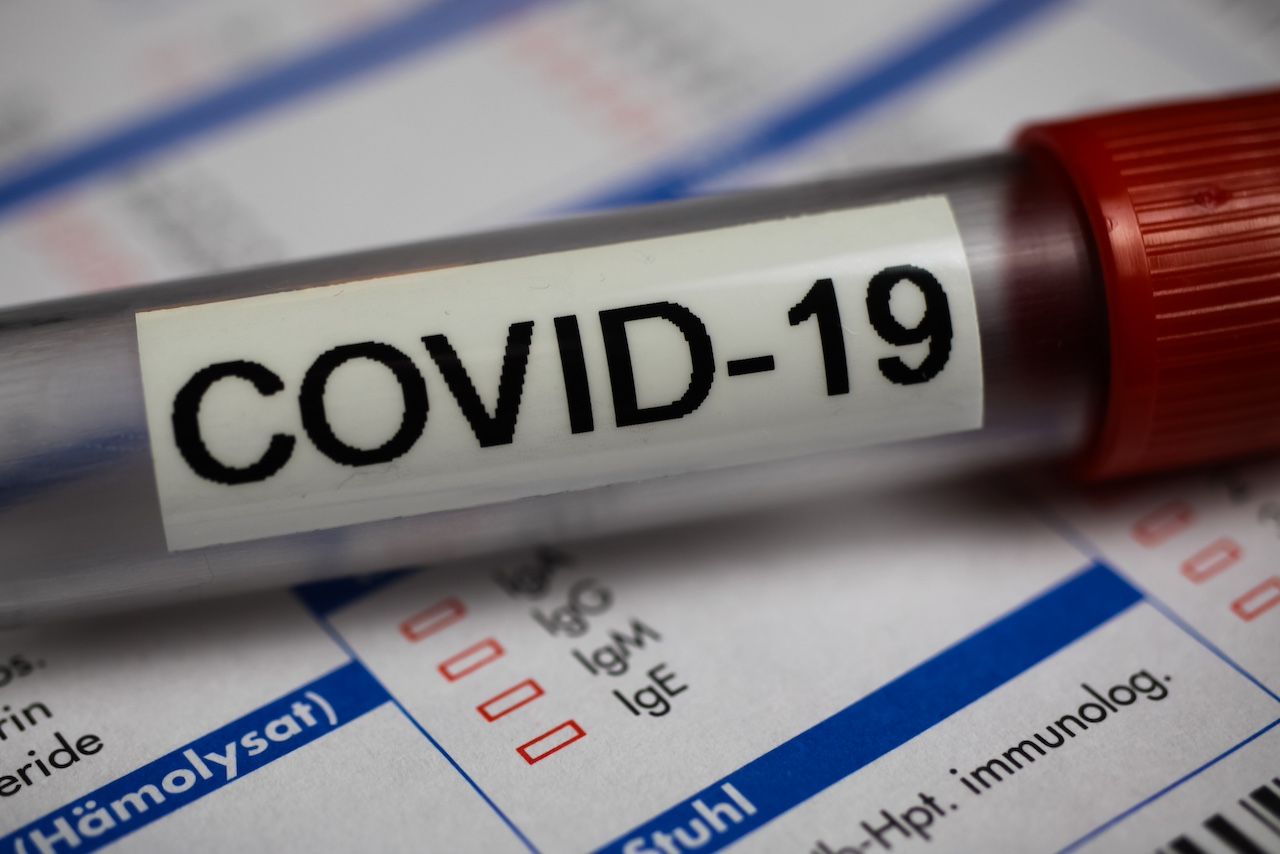- Center on Health Equity & Access
- Clinical
- Health Care Cost
- Health Care Delivery
- Insurance
- Policy
- Technology
- Value-Based Care
Case of Primary Hepatic DLBCL Following COVID-19 Raises Questions About Possible Links
Other viral infections, including Epstein-Barr virus and hepatitis C, have already been linked with primary hepatic lymphoma, the authors said.
A new case report highlights potential links between COVID-19 and solid tumors, such as primary hepatic diffuse large B-cell lymphoma (DLBCL).
The authors of the report, which was published in ACG Case Reports Journal, said it is important for clinicians to report similar cases to add to the scientific literature, adding that previous research has suggested a link between chronic inflammatory states, including those caused by infections, and primary hepatic lymphoma through hepatic B cells.
COVID-19 diagnostic test | Image credit: Ralf - stock.adobe.com

In this case, the patient was 53 years old when he showed up at a hospital emergency department reporting fatigue, coughing, and recent weight loss of 25 pounds. The patient had a history of hypertension, and had received a diagnosis of COVID-19 three months earlier, for which he had received steroids and azithromycin.
The study authors said the patient’s initial symptoms were ambiguous, “potentially indicative of either persistent COVID-19 infection or an underlying cancer,” they wrote.
The patient did not experience fever or night sweats, which the authors noted are early signs of DLBCL.
“Abdominal ultrasound displayed a normal-sized liver with 2 cysts, measuring 0.8 cm near the gallbladder and 1.1 cm in the right lobe,” the authors noted. However, a CT angiogram of the chest did not show lesions on the liver.
Epstein-Barr virus (EBV) titers indicated prior exposure to the virus, although not an active infection.
A polymerase chain reaction (PCR) test for COVID-19 came back negative, but the authors said the patient’s symptoms and the CT angiogram findings of patchy airspace opacities in the right lower lobe led them to believe the patient was experiencing persistent COVID-19.
“This hypothesis was further supported by studies suggesting that COVID-19 might be present even when viral loads in the nasopharynx are too low for detection, implying a low viral load in the upper respiratory tract rather than a false-negative PCR result,” they wrote.
The patient was discharged, but returned a month later. By then, he had lost an additional 15 pounds and was complaining of exacerbated symptoms and high-grade fevers. A new CT angiogram of the chest showed hypodense lesions on the liver, which were later confirmed by imaging of the abdomen and pelvis. A liver biopsy was then performed, leading to the diagnosis of DLBCL of hepatic origin.
The authors said this case of primary hepatic DLBCL is both “rare” and “intriguing.” Only about 1 in 10 cases of hepatic non-Hodgkin lymphoma involve the liver, and most of those cases come after disease progression, the authors said.
“The relationship between viral infections and the development of lymphomas has been well investigated,” they wrote, adding that EBV, along with hepatitis B and C, have been linked with primary hepatic lymphoma.
“However, the specific mechanisms through which viral infections contribute to oncogenesis are complex and poorly understood,” they said.
The authors said it is unclear whether the COVID-19 infection directly triggered the patient’s cancer or perhaps exacerbated pre-existing conditions associated with immune dysregulation. However, they said it is important for clinicians to actively report similar cases so it will be possible to better evaluate any potential links. They also suggested that physicians should consider the potential impact of a COVID-19 diagnosis on patients with diagnosed lymphoma.
Reference
De Souza LM, Ismail M, Elaskandrany MA, Fratella-Calabrese A, Grossman IR. Primary hepatic EBV-DLBCL lymphoma in the setting of COVID-19 infection. ACG Case Rep J. 2024;11(2):e01276. doi:10.14309/crj.0000000000001276
